Articles
This Atlas, And the One That Came Before, Really Do Serve To Hold Up The World
STATEN ISLAND, N.Y. — Marcus Welby was a doctor who knew his patients on a first-name basis, regularly made house calls and never seemed to be concerned about getting paid for his ministrations. He was, of course, a fictional character, portrayed by “Father Knows Best” actor Robert Young in the television series that ran from 1969-76.
But there was a real-life Marcus Welby, and he dispensed his time, more than a little of his own money and especially his genuine concern for his patients, especially the poor, and even more especially the children of the poor. His name was Dr. Theodore A. Atlas Sr. and his well of compassion must have seemed bottomless to those residents of this comparatively unglamorous borough of New York City who seldom are served much when life’s better things are handed out. Here are some facts about Dr. Atlas that weren’t glimpsed even on episodes of “Marcus Welby, M.D.” He waded through snow drifts and climbed through windows to deliver babies during winter’s worst storms; he went into the projects to provide needed medical services while other doctors refused to go there, and on Wednesdays he used blankets and pillows to make makeshift beds in his office and performed tonsillectomies on patients who could not afford to pay for surgery. It was not unusual to see him with pajamas under his working clothes because he never made it home after a late-night emergency house call.
And when even those efforts proved to be inadequate to care for the masses that had come to depend on him, Dr. Atlas founded two hospitals whose first mission is not to ascertain how much and how soon their patients will be able to pay for the treatment they receive.
It would be easy to surmise that, in this cynical world, there isn’t anyone around with a heart and a purpose as pure as that demonstrated in the 55 years in which Dr. Atlas, who was 88 when he died in 1994, served humanity in general and specifically his fellow citizens of Staten Island. But such a supposition would be incorrect.
Theodore A. Atlas Jr. – most people know him as Teddy – is not a physician, but through the magic of TV he is better known than his father ever was, and maybe even more so than Dr. Welby was when the late Robert Young was delivering scripted lines of dialogue instead of babies, and making viewers wish their own doctor was somehow more like the kindly guy who came into their living rooms on the small screen each week.
Teddy Atlas, 58, has been inducted into three Halls of Fame (the New Jersey Boxing Hall of Fame, World Boxing Hall of Fame in California and the Staten Island Sports Hall of Fame). He has been a noted trainer of world champion boxers (Mike Tyson, Michael Moorer, Wilfred Benitez, Barry McGuigan, Junior Jones, Joey Gamache, Simon Brown, Donny Lalonde, Alexander Povetkin) and, since 1988, is the heavily accented voice of ESPN’s “Friday Night Fights.” The Boxing Writers Association of America named him Trainer of the Year in 1994, as well as the recipient of the award for excellence in broadcast journalism in 2001.
But, more than anything, Teddy Atlas is proud to be the son and namesake of a man whose greatness was achieved out of the spotlight, and who performed his countless good deeds without much, if any, thought as to how much credit he would receive.
The Dr. Theodore A. Atlas Foundation, established in 1997, has continued to make Staten Island a better place for those who sometimes find themselves in desperate circumstances. And Teddy Atlas, whose youthful indiscretions – dropping out of high school, occasional brushes with the law – were not reflective of the upbringing of which he is now so fiercely proud, has embellished his father’s legacy by continuing to serve the community he loved with humility, devotion, and the sincere belief that what is bad can often be transformed into something good.
They held the 18th annual “Teddy Dinner” here Thursday night at the Staten Island Hilton Garden Inn, and as usual the big banquet hall was filled by those who want to share in and contribute to the vision of Dr. Atlas and the son who has made it his own. The Dr. Theodore A. Atlas Foundation has funded wheelchair ramps for the elderly and disabled, purchased medical equipment when a person’s health insurance has refused to cover it, and paid for a sick child’s parents to travel with the child when the right medical care can only be provided away from home. The Foundation also has created and operated the Atlas Cops & Kids Boxing Program, run incentive programs in schools to encourage and motivate students, and distributed turkeys on Thanksgiving and toys on Christmas to families who do not have the financial resources to properly celebrate the holidays.
The swells were there, as usual – athletes (John McEnroe, Iran Barkley, Al Leiter, Sean Landeta, Amani Toomer, et al), actors (Rosie Perez, Holt McCallany, Tony “Paulie Walnuts” Sirico, Carmine Giovinazzo), politicians and captains of industry – as well as just plain folks who considered their $200-a-plate ticket price to be an investment in the future of their community. But whatever their station, they came in part because of Dr. Atlas, who has become a local legend, and more so because of Teddy Atlas, who refused to allow that legend to fade away.
“I just figured that a man who cared that much about people should be remembered after dedicating his life the way he did all those years,” Teddy has said of his father. “If you live the right life, you’re remembered, and in that way you’re never gone.”
In addition to the aforementioned charitable acts, the Atlas Foundation also has founded and paid the operating expenses of seven boxing gyms in New York, which is Teddy Atlas’ way of putting his own imprimatur on the mission his father undertook so many years ago. But, while those gyms have produced some excellent prospects – chief among them light heavyweight Marcus Browne, who represented the United States at the 2012 London Olympics and is now 12-0 with nine knockouts as a pro — Atlas stressed that the gyms’ primary purpose is to create champions in life, not necessarily champions in the ring.
“A lot of years ago there was a kid, he was 15 years old,” Atlas said. “He got lost. People get lost sometimes. He was a great kid, but he got lost and he got into a bad place. He got killed in the streets. So it doesn’t matter if he was a great kid, ’cause he’s dead.
“I was at his funeral. A few years after that, somebody came up to me and asked me if I’d subsidize boxing gyms. It cost a bit of money. I said yes – not to make champion fighters, (although) we do have a kid I’m so proud of, and I love him, Marcus Browne, who went on to the Olympics. But that’s not why I subsidize the gyms. I do that because of the day of that funeral. I always thought that if they had gyms back then, and I had gotten that kid into a gym, he wouldn’t have gotten lost. He might have gotten found. That what our gyms do. They find people. They help good kids that wind up in bad places. They help them find themselves through the direction, through the confidence, through the pride (of boxing). It gives them a reason to care about themselves when they’ve lost that reason. It makes them feel good. It makes them understand that they can depend on themselves, that they have that kind of inner strength.”
Words, of course, mean so much. But a living, breathing example of what you’re speaking about means even more.
“We had a kid who, two years ago, he was lost,” Atlas continued. “Through his own words he was drinking a bottle of vodka a day, and his only friends were drug dealers and gang members. Another good kid, but it didn’t matter. He was lost. But then he walked into one of your gyms – I call it your gyms, because they are. And he got found. He’s a kid who would make any father in this room proud of who he is, and who he’s become. His name is Matty. I’m so proud of you, Matty, because you validate the reason we spend the money on those gyms. You make us right.”
Asked to stand and take a bow, Matty, the lost kid who got found, received an ovation that seemed likely to forever keep him from the downward spiral in which he once seemed trapped.
“When you look around today’s world and this country, there’s a lot to be concerned about,” Atlas continued. “Maybe the biggest concern is not knowing what you can depend on anymore. Even our pastimes, the things that are supposed to distract us and give us a temporary escape, like our sports, can give us concerns sometimes. My sport, as powerful and as honest and as testing as that squared circle, the ring, can be, it also can leave you wondering at times. But then comes nights like this – 18 years of nights like this. And what does it tell you? Actually, nothing new. Sometimes you don’t really need to learn nothin’ new. You just need to be reminded of something old.
“For me, it’s about my business – boxing. If you’re in it long enough, you learn it’s really not the speed or the power or how good your chin is that decides how great you’re going to be. It’s something else. It’s something that has nothing to do with genetics, race, ethnicity, even religion. It’s something that’s been here since man has been here. It’s something that’s available in the richest and the poorest neighborhoods, in double-parent homes and in single ones, on Park Avenue or in the Bowery. It’s our ability to decide how we’re going to behave. No matter how difficult the fight, it’s always your choice. Do we behave like a winner, or behave like a loser? Pretty simple, pretty powerful.
“Once again, on display here tonight, is a room of people who always decide to be champions. I love you all. You do so much.”
I turned to see to see a tear forming in the corner of the eye of a lady seated to my left. And, I suspect she wasn’t the only one to get misty. As an orator, Teddy Atlas might not have just delivered the Gettysburg Address, but his words nonetheless carried a significant impact. Those words strengthened the Foundation, and touched a spot in the hearts of attendees that can only result in a stronger, more caring community.
In Greek mythology, Atlas was the Titan who held up the weight of the world on his broad shoulders. In that context, Dr. Theodore A. Atlas Sr. and his son are as aptly named as anyone ever has been. But the weight they have and are still bearing isn’t so terribly heavy because, when you think about it, what could be more uplifting than helping others?
Those wishing to send donations can do so to: The Dr. Theodore A. Atlas Foundation, 543 Cary Avenue, Staten Island, N.Y. 10310
-

 Featured Articles3 weeks ago
Featured Articles3 weeks agoThomas Hauser’s Literary Notes: Johnny Greaves Tells a Sad Tale
-
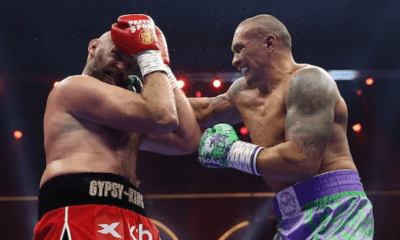
 Featured Articles2 weeks ago
Featured Articles2 weeks agoBoxing Notes and Nuggets from Thomas Hauser
-
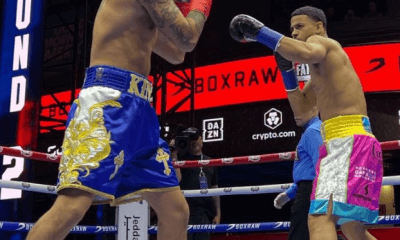
 Featured Articles4 weeks ago
Featured Articles4 weeks agoRolly Romero Upsets Ryan Garcia in the Finale of a Times Square Tripleheader
-
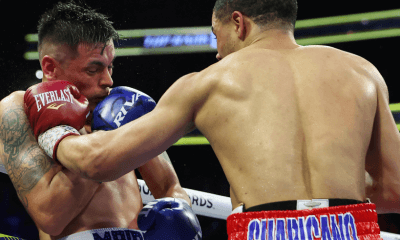
 Featured Articles4 weeks ago
Featured Articles4 weeks agoUndercard Results and Recaps from the Inoue-Cardenas Show in Las Vegas
-
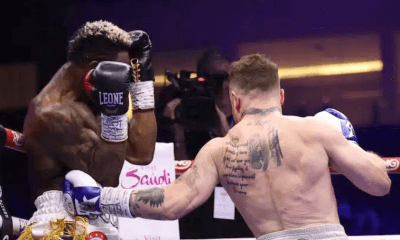
 Featured Articles4 weeks ago
Featured Articles4 weeks agoCanelo Alvarez Upends Dancing Machine William Scull in Saudi Arabia
-
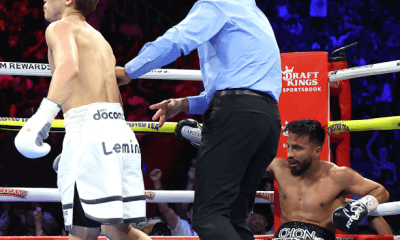
 Featured Articles4 weeks ago
Featured Articles4 weeks agoBombs Away in Las Vegas where Inoue and Espinoza Scored Smashing Triumphs
-
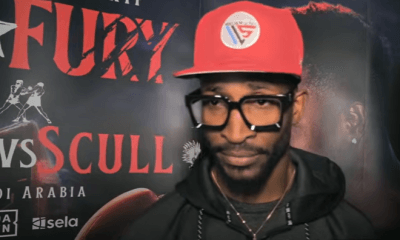
 Featured Articles4 weeks ago
Featured Articles4 weeks agoArne’s Almanac: The Good, the Bad, and the (Mostly) Ugly; a Weekend Boxing Recap and More
-
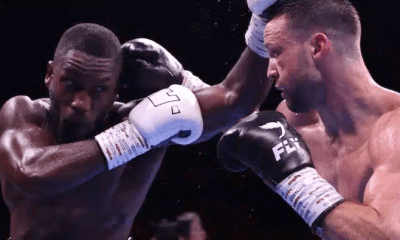
 Featured Articles1 week ago
Featured Articles1 week agoEkow Essuman Upsets Josh Taylor and Moses Itauma Blasts Out Mike Balogun in Glasgow



















